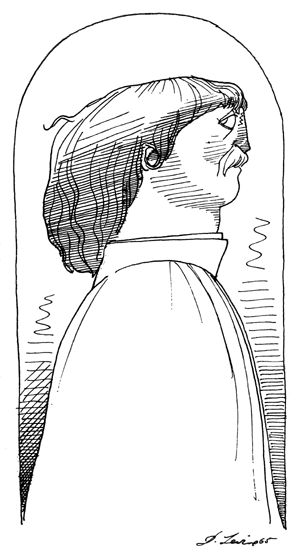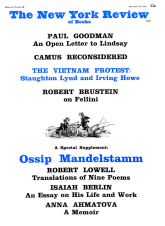Born near Naples in 1548, burned at the stake in Rome in 1600, Giordano Bruno is one of the most striking figures among the Italian philosophers of the Renaissance, and has been one of the most misunderstood. His old reputation as martyr for modern science and the Copernican theory has had to be radically revised in the light of better understanding of the Hermetic basis of his philosophy, and this involves a new approach to the works which he wrote in England between 1583 and 1585. Among these is the remarkable one, the title of which is here translated as The Heroic Frenzies, in which Bruno presents his philosophy in the form of love poetry and love emblems.
In the dedication of this work to Philip Sidney, Bruno states that his love poetry is not addressed to a woman but represents heroic enthusiasms directed towards a religion of natural contemplation. The pattern is formed by a succession of emblems, meticulously described in words, the images of which are embodied in poems and discussed in commentaries on the poems. The images are mostly Petrarchan conceits about eyes and stars, arrows of Cupid, and the like. This work shows the philosopher as poet; or the magician who seeks identification with the divine through intense cultivation of the imagination. The recurring poems on Actaeon who hunts after the vestiges of the divine in nature, until he is himself hunted and devoured by his dogs, express a mystical identification of subject with object and the wildness of the chase after the divine object, the naked Diana or “the beautiful harmony of the body of nature.” Until there appears amidst the woods and waters of contemplation a vast vision of Amphitrite, embodying the enthusiast’s imaginative grasp of the One behind the multiplicity of appearances.
It is difficult to convey in words the impact made on the reader by this extraordinary work which is now made accessible in English in the translation by P.E. Memmo. What is most striking is the intense visualization of the emblems, conceits, and mythological figures. For the poet-magician these images are not so much explained by the philosophico-religious commentaries that follow them; they are themselves the imaginative means of achieving the insights therein described. The stars-eyes that wound the lover, the arrows that pierce his heart, are more than images or allegories (Bruno insists that his poetry is not allegorical) of his experience of receiving intuitions of the divine splendor from the “innumerable individuals and species of things.” They are the forms of his prayer, the expression of the intentions of his will towards receiving such experiences.
Though much has been done on the history of Petrarchist poetry in the Renaissance, particularly in the way of source-tracing, it is perhaps less important to find out whether a poet is copying Bembo or Ronsard than to ask with what kind of inner intentions he is using this repetitive and artificial language. There was always something of the liturgical element inherent in the amour courtois in Petrarchist love poetry; hence the ease with which its darts and death-dealing glances were transposed to devotional uses by the Jesuits. Some of the closest analogies to Bruno’s use of Petrarchan emblems are in fact to be found in those little pictures of Divine Love shooting arrows into the Soul in the religious emblem books. It is with a kind of baroque religious intensity that Bruno expresses his cult of nature through love emblems, and one can perhaps sense here the workings of those impulses which were directing attention towards the natural world in the form of scientific enquiry. This is a moment in the history of Petrarchism in which the conceits are used, not of romantic woman-worship, nor as transposed to orthodox religious uses, but in a cult of nature. Some trace of such “natural” overtones in love poetry can perhaps be detected in the sonnets of the illustrious knight to whom Bruno dedicated this work; the word “nature” occurs many times in Sidney’s sonnets to “Stella,” whose star-like eyes are “nature’s chief work.” Though it might be tempting to read anticipations of Wordsworth into Bruno’s romantic nature poetry, such a comparison must not be pressed, for Bruno’s nature is a world of occult sympathies and stellar correspondencies which be cultivates with images that are not those of actual scenes or landscapes—though one wonders whether the words and waters amidst which his natural divinity appeared to him may vaguely reflect a wondrous, unspoilt, valley of the Thames.
The five works in Italian and in dialogue form (of which The Heroic Frenzies, 1585, is one) which Bruno published during the two years of his visit to England were preceded by the extraordinary work on the art of memory, in Latin, which must have been printed soon after his arrival in 1583 and which is alluded to in The Heroic Frenzies as “The Thirty Seals.” This work is, I believe, fundamental for the understanding of the Italian works. In it Bruno outlines his Hermetic religion of Love, Art, Magic, and Mathesis, and makes a passionate claim for the primacy of the imagination in the cognitive process, as the sole instrument for the grasp of reality. The ordering of images in series is his great preoccupation in this and other works on memory. Vital and living images will, he believes, unify the contents of memory and set up magical correspondencies between outer and inner worlds. Images, he insists, must be charged with the affects, and particularly with the affect of Love, and he expauates on this theme in passages in which a magician’s use of an emotionally charged imagination is strangely combined with mystical and religious use of love imagery. In such passages we are clearly within range of the use of love conceits in The Heroic Enthusiasts, and Bruno’s intense insistence, in his works on memory, on the organization of significant images must have relevance to the carefully ordered succession of images on which The Heroic Frenzies is based. When the works which Bruno published in England are gathered together in some unified series of translations, the passages on the imagination in “The Thirty Seals” must not be omitted. They explain, or at least suggest, the use of the love conceits as part of a magico-religious technique for becoming “joined to the soul of the world.”
Advertisement
Memmo’s translation of the Eroici furori is faithful; and the very important dedication to Sidney is here translated for the first time (L. Williams did not include it in his translation published in 1887-9 now unobtainable). The poems are rendered in prose, which is useful from the point of view of accuracy but does not sufficiently distinguish the poetic statements of the themes from the prose commentaries. This workmanlike translation loses something of the “furor” or frenetic enthusiasm of the passionate original. In his Introduction, Memmo gives, among other matters, a rapid sketch of love poetry with philosophical commentaries from Dante onwards, discusses Renaissance Neoplatonism, quoting Ficino on the Platonic furores (Bruno is of course using the Platonic term in his title), and endeavors to relate Bruno’s emblems to the emblematic tradition. One of his most valuable suggestions is that there may be an influence of mystical alchemy on some of Bruno’s figures. There is much that is useful in this Introduction and also in Memmo’s notes to the text of his translation, and the student will be grateful for the basic help which he has provided. The general approach to Bruno is, however, old fashioned (“the heliocentric theory which Bruno himself had helped to form”!). A wider range of emblem literature might have been consulted for the discussion of Bruno’s emblems. His emblem of the butterfly destroying itself in the flame could be exactly illustrated from the picture of this image in Camillo Camilli’s almost contemporary collection of devices where it has a motto taken from a line in Petrarch. I reproduced this in an illustrated article on Bruno’s emblems (published in 1943, which Memmo does not appear to have seen); such illustrations are needed to bring out Bruno’s triple line of approach to each of his images which are expressed visually in the description of the emblem, poetically in the poem, and philosophically in the commentary. Bruno is working from his profound and oft-expressed conviction that the Painter, The Poet, and the Philosopher are all one.
According to Memmo, the Eroici furori is one of the last works of the Renaissance in which the visual arts, poetry, and philosophy form an organic whole. “After Galileo’s telescope confirmed the heliocentric theory,” he says, “science and theology went their separate ways and eventually became sharply antagonistic. The other disciplines followed suit, and accordingly, philosophy divorced itself from poetry. Poetry, too, according to the new habit of mind, came to be increasingly isolated from the visual arts.” Though there are obvious historical misunderstandings and exaggerations in these remarks, they are yet a perceptive attempt to put into words the significance of Bruno’s work. I would try to formulate its historical position otherwise. In Bruno’s cosmic, artistic, poetic imagination, the Renaissance reaches a very late phase, and one of extreme potency. It is this late form of the Renaissance which he brings with him to England at a very crucial moment.
This translation will draw attention to a most powerful and striking work, and will raise in many readers’ minds questions of relevance to the English poetic Renaissance ushered in by Philip Sidney.
This Issue
December 23, 1965




